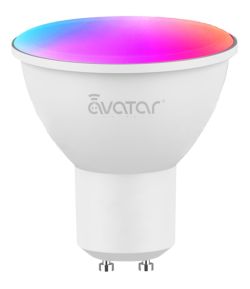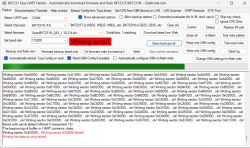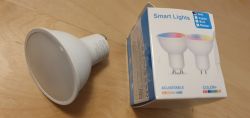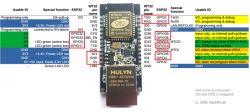FAQ
TL;DR: Wireless alarm sensors need battery swaps every 1.5–2 years; "Somehow it works." For lighting, wired is still more reliable, but Wi‑Fi/Zigbee/Z‑Wave can work with solid coverage. For homeowners, renovators, and installers deciding between Wi‑Fi and twisted‑pair automation. [Elektroda, gkwiatkowski, post #20737324]
Why it matters: You’ll choose a reliable, maintainable path for lights and alarms without needless rewiring.
Quick Facts
- Battery alarm detectors typically need replacement every 1.5–2 years; RF jamming can trigger fault reports. [Elektroda, gkwiatkowski, post #20737324]
- Battery sensors rarely use Wi‑Fi due to power draw; wireless actuators offer fewer advantages than sensors. [Elektroda, TvWidget, post #20737408]
- Wi‑Fi touch switches (Sonoff/Ewelink) have run for 3+ years in real homes; ensure stable coverage. [Elektroda, weryfany, post #20745550]
- Recommended local stack: Zigbee devices with Home Assistant for low‑power sensors and local automations. [Elektroda, kmarkot, post #20754365]
Is wired (twisted pair) more reliable than Wi‑Fi for home automation?
Yes. Cables provide higher reliability and predictability for core functions. Define your automation scope first. "Don’t you think cables are more reliable?" If reliability is critical, prefer wired control for lights and safety systems. Add wireless only where wiring is impractical or for add‑on features. [Elektroda, sosarek, post #20737010]
Can I switch room lights over Wi‑Fi instead of pulling new cables?
Yes, if your Wi‑Fi coverage is strong and consistent. Users report that whole‑home Wi‑Fi lighting works quite well under solid coverage. Place access points to avoid dead zones and keep 2.4 GHz channels uncongested. Start in one room, validate stability, then expand. "It can and does work quite well." [Elektroda, Szyszkownik Kilkujadek, post #20750928]
Do Wi‑Fi touch switches like Sonoff/Ewelink hold up long term?
Many do. A forum user reports 3 years of daily use with eWeLink‑based, Sonoff‑logo touch switches. Success depends on stable power, good Wi‑Fi, and correct installation depth in wall boxes. Update firmware when available and document device names and locations. Keep spare modules for quick swaps. [Elektroda, weryfany, post #20745550]
How do wireless alarm systems perform in practice?
They work, with upkeep. Expect detector batteries to last about 1.5–2 years. Panels may report RF jamming if nearby devices interfere, which is a known edge case. Plan a battery calendar and test supervision signals. “Somehow it works,” but maintenance matters for reliability. [Elektroda, gkwiatkowski, post #20737324]
Why don’t most battery sensors use Wi‑Fi?
Wi‑Fi draws more power than low‑power protocols, which shortens battery life. Designers choose Zigbee/Z‑Wave/other low‑energy radios for years‑long operation. Reserve Wi‑Fi for mains‑powered devices like switches, plugs, and bridges. For coin‑cell sensors, avoid continuous Wi‑Fi connectivity. [Elektroda, TvWidget, post #20737408]
Are wireless actuators a good idea for lighting or blinds?
Only when wiring is difficult. Actuators are usually fixed in place and already need power cables. Wireless adds little benefit and another failure mode. Prioritize wired control for actuators if you can reach them with cable. Use wireless mainly to add control points or retrofit scenes. [Elektroda, TvWidget, post #20737408]
Is Z‑Wave still worth considering over Wi‑Fi or Supla?
Many installers favor Z‑Wave after real deployments. It offers a mature ecosystem and strong device interoperability. "When you have to deal with z‑wave you will know." If you plan many battery sensors, Z‑Wave is a solid candidate. Evaluate device availability and your controller support first. [Elektroda, kkknc, post #20750740]
What’s a good local‑control stack to start with?
Zigbee devices integrated with Home Assistant is a popular, local, and extensible setup. It fits low‑power sensors well and supports robust automations without cloud dependency. Start with a supported Zigbee coordinator and add devices room by room. [Elektroda, kmarkot, post #20754365]
Can I use my alarm/PLC to switch lights over existing wires?
Yes. Alarm‑integrated PLCs can drive lights via existing cabling. One approach: Ropam PLC. How‑To: 1. Add programmable outputs or expansion relays in the panel. 2. Wire outputs to lighting circuits through certified relays/contactors. 3. Program schedules/scenes and link to sensors or keypads. [Elektroda, bezpiecznykrakow, post #20751053]
Does fiber‑optic internet change how I should wire or plan automation?
No. Internet backhaul speed doesn’t determine your automation bus choice. Your Wi‑Fi coverage and device power model matter much more. Focus on RF reliability indoors, wiring feasibility, and local control needs. “I don’t know what fibre optic internet has to do with building automation.” [Elektroda, Szyszkownik Kilkujadek, post #20750928]
What interference or failure modes should I expect with wireless systems?
Alarm panels can detect RF jamming and raise faults when nearby devices transmit on similar frequencies. Plan for periodic sensor tests and supervised heartbeats. Keep detector batteries fresh to avoid false trouble events. Treat radio planning as seriously as cable routing. [Elektroda, gkwiatkowski, post #20737324]
Which platform should I pick: Sonoff, Fibaro, Tuya, or Supla?
Test against your needs, then standardize. Users try multiple ecosystems and settle on what proves stable and flexible. One user moved to Tuya after trials. Prioritize local control options, integration with your hub, and long‑term device availability. Label circuits and keep spares. [Elektroda, Szyszkownik Kilkujadek, post #20750928]
Should I go all‑wireless or mix wired and wireless?
Start from requirements. Use cables where maximum reliability is needed, like primary lighting circuits. Add wireless where wiring is impractical or for extra control points. "Otherwise it depends what you mean by automation." Document choices per room and function. [Elektroda, sosarek, post #20737010]






